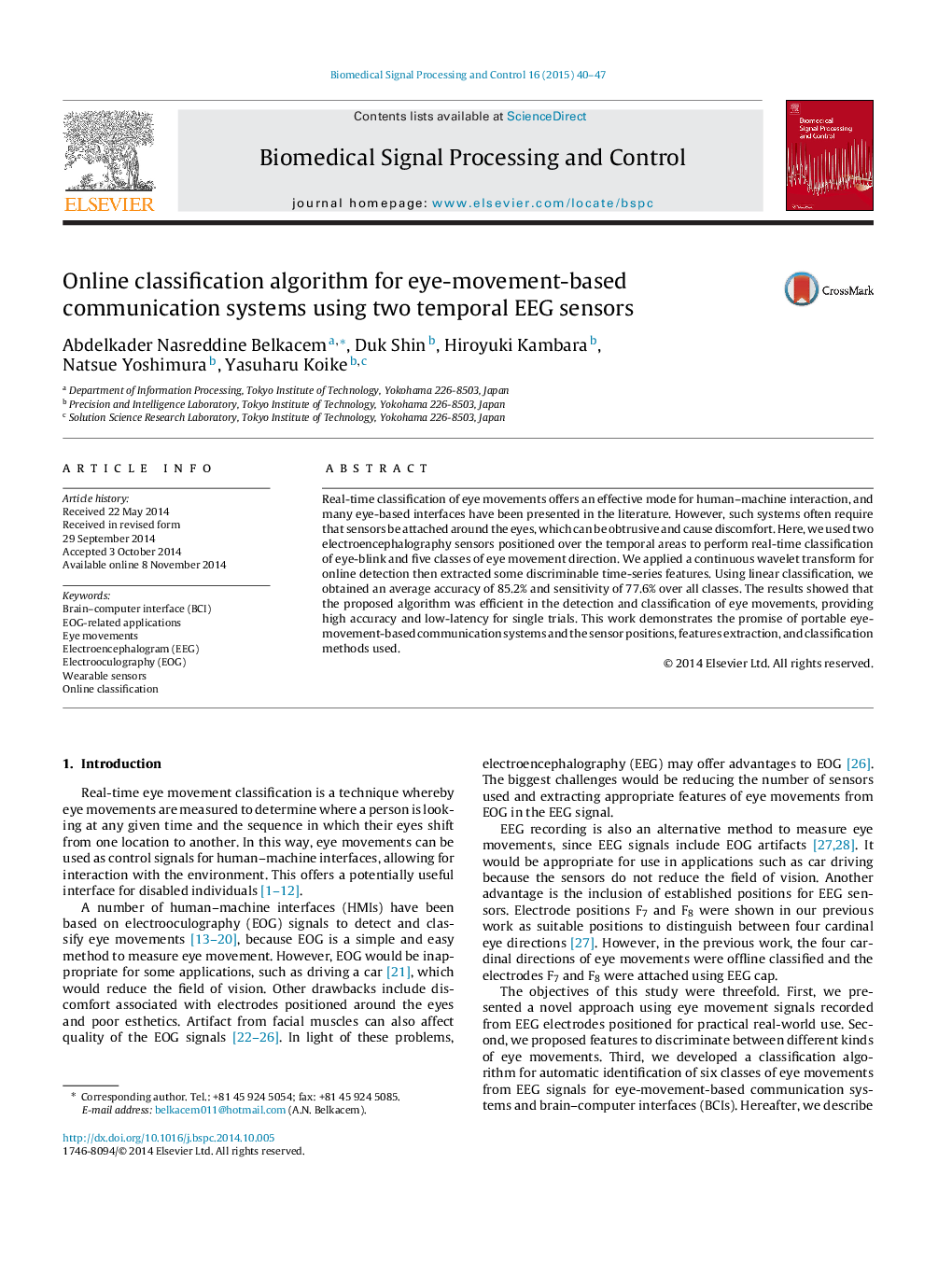| Article ID | Journal | Published Year | Pages | File Type |
|---|---|---|---|---|
| 557977 | Biomedical Signal Processing and Control | 2015 | 8 Pages |
•We developed a real-time algorithm for eye-movement-based communication systems.•We proposed new sensors position to detect and classify eye movements for practical real-world use.•The proposed algorithm can distinguish among six classes of eye movements using two temporal EEG sensors with high accuracy and low-latency using a single-trial to make a decision.
Real-time classification of eye movements offers an effective mode for human–machine interaction, and many eye-based interfaces have been presented in the literature. However, such systems often require that sensors be attached around the eyes, which can be obtrusive and cause discomfort. Here, we used two electroencephalography sensors positioned over the temporal areas to perform real-time classification of eye-blink and five classes of eye movement direction. We applied a continuous wavelet transform for online detection then extracted some discriminable time-series features. Using linear classification, we obtained an average accuracy of 85.2% and sensitivity of 77.6% over all classes. The results showed that the proposed algorithm was efficient in the detection and classification of eye movements, providing high accuracy and low-latency for single trials. This work demonstrates the promise of portable eye-movement-based communication systems and the sensor positions, features extraction, and classification methods used.
